This content has been archived. It may no longer be relevant
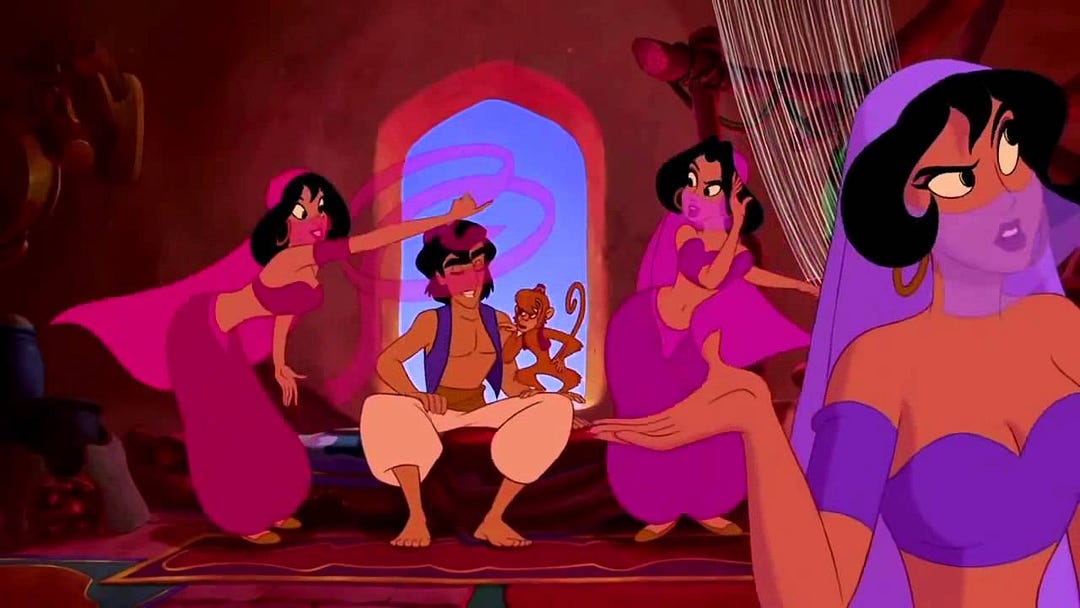
Mickey Mouse ears, theme parks, movies, a plethora of merchandise you can buy, theater productions, and other entertainment properties. Disney without a doubt is one of the most recognizable brands worldwide. With the great successes as a mass media conglomerate over the span of 93 years, Disney now owns properties like Marvel and Lucasfilm and with Star Wars, Marvel Cinematic universe, and Disney princess’ properties under their belt they are a force to be reckoned with. However, it;s double edged show, when most children in the global north are introduced to these properties they are often being shaped by the media they consume. While I am unsure if Disney intends to be provocative and problematic, it would be erroneous of me as a writer and avid media consumer to not take notice. While I do admit I am excited for the future of the company and it’s umbrella of properties we cannot ignore the past of Disney which they have been making strides in order to hide. I will talk about three components of Disney’s characterization of people of color: the savage, the orient, and the other.
The Savage
The first trope I will be examining is the savage seen in Disney’s Pocahontas. For those who are not aware of the savage trope, is a trope that penalized black and brown people who were not colonized. Savages are depicted as belligerent, angry people who do not have complex societies compared to their white European counterparts. In this case, the Powhatan people in Pocahontas. While Pocahontas was a real person as well as many of the characters depicted it should be noted that the animated film is the retelling of events. It’s ahistorical and romanticizes colonialism, by wrapping love story around it.
The main theme of the film is whiteness vs. indigeneity. The main love interest of Pocahontas was Capt. John Smith an English man traveling to “the new world” for riches for Governor Ratcliffe. In the new world, pre-colonial Virginia, Chief Powhatan has arranged his daughter, Pocahontas, to be married to the village’s greatest warrior Kocoum. Pocahontas then seeks the guidance of her grandmother Willow who is a tree. She has seen a vision of a spinning arrow, a vision she believes tells her change is coming. The viewers are then introduced to John Smith, like a staple in Disney films Pocahontas in her curiosity falls for the captain. Without spoiling the movie this upsets several parties in the film causing havoc. There are several scenes that allude to that interracial romance will solve racial tension. There are several tropes in Pocahontas that point to this but I will point to this scene in Pocahontas. Pocahontas and John Smith are divided and their “love” is almost jeopardized by the growing tensions between natives and settlers. This song demonstrates the viewpoint of what the settlers think of Natives, and the Natives think of settlers.
A grave issue of Pocahontas is the mythologizing of an actual person who at the time was a 12-year-old girl not an assumed 18-year-old in the Disney film. John Smith was 28, the two were never romantically involved, however, she did marry John Rolfe in real life who appeared in the sequels. In some ways, Pocahontas is sexualized ideal of noble savage coded the “Indian princess’, which has been a long trope in American films. Pocahontas is depicted to be beautiful resembling more of a supermodel, with long hair, long legs, and formfitting dress. Her story-line ultimately is tied being a prize to be won, between stoic Kocoum and charismatic John Smith. Kocoum in many ways represents the traditions frowned upon the settlers while John Smith his charm represents a new exciting life.This trope is often a juxtapose the alarming rate that Native women experience high rates of intimate partner violence in their communities.
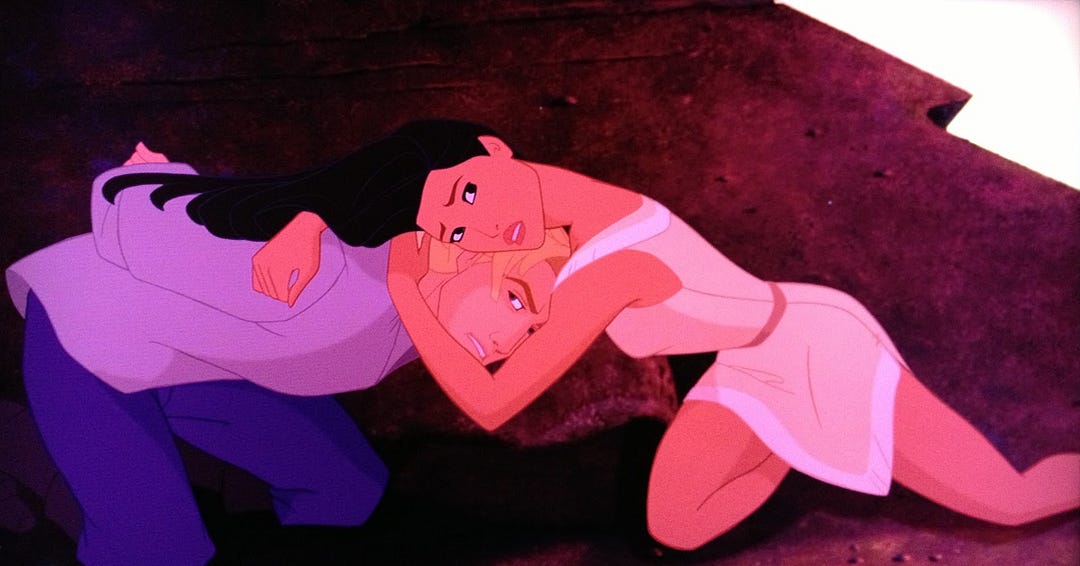
Like the savage trope, there’s a misconstrued understanding of animism. Animism is the religious belief that plants and animals possess a spiritual essence. Throughout the film you see Pocahontas speaking to animals and plants candidly. There are several musical numbers that capture this phenomenon. This may have been unintentionally harmful,however, it has a real impact on native practices that are seen as otherworldly. It also erases the aspect of colonialism where many indigenous languages and practices were deemed as evil or witchcraft by settlers.
This is not the first that Disney has used the savage trope in a film. See the animated Peter Pan film from 1953. There is a segment called ‘What Makes The Red Man Red’. Peter Pan and The Lost Boys encounter a group of indigenous people and join them by putting on their costumes as they break into song. The “Injuns” retell the story of their origin while hopping and hollering. The scene depicts them smoking ‘peace pipes’ and wearing headdresses which may stem from the stereotype that all native people do that. The scene is uncomfortable and downright hard to watch as it depicts how pervasive these tropes are no matter how seemingly innocent.
The Orient
I will be examining Disney’s Aladdin and criticizing the orientalist tropes that are prevalent in the film.
The orient is an antiquated term associated with the Eastern world: North Africa, Middle East, and Asia. Orientalism, however, is a thing is still pervasive in contemporary media. The term was coined by Edward Said, who describes it as the western world’s fixation of the Eastern world. In Aladdin, a film derived from several tales found in Arabian Nights is set in Agrabah a place that is a construction of the western fantasy. Agrabah was originally supposed to be Baghdad however with the US -Iraq relations at the time the producers of the film felt it was too political to add. With that being said Aladdin is not a real story but several of the character tropes allude to what many Western people think of people in that region of the world. In Aladdin, one of the most poignant things you will see is the casual sexualization of the female characters. Almost all female characters in this film are sexualized. There is the ‘harem girl’ trope that appears overtly and covertly. An example of this is the idea of brown women who are sexually available, often the Western portrayal of Harems, conflate belly dancing with the lives of concubines often creating a shroud of mystery on brown women who dance and dazzle. This is a jarring contrast due to the fact the West has a fixation on veils: hijabs, niqab, burkas. Whose value is only in their sexual prowess. These characters are nameless and while they are background characters, these trope appears several times in the movie. The most obvious example is when Jasmin is captured by Jafar, where she begins to be coy using her sexuality to ultimately thwart Jafar to escape.
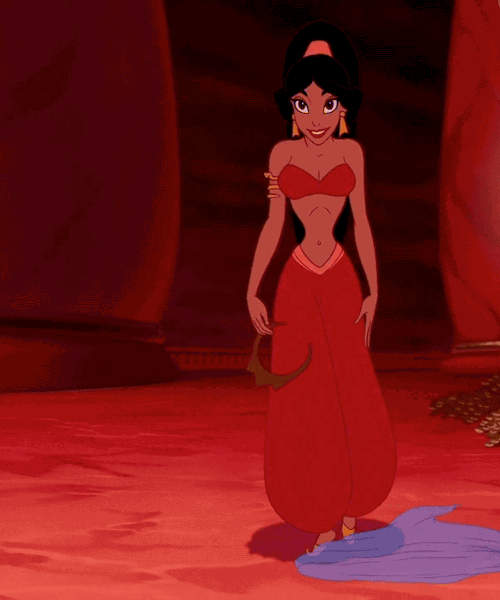
When watching Aladdin and Jafar I noticed of the stark differences of their characterization. Jafar is coded as deviant which makes sense as he is the villain but unlike the protagonist Aladdin, is darker, with more angular features, more ethnic features and it’s assumed he’s effeminate compared to Aladdin who is acrobatic and more masculine presenting. Also, take note of Jafar’s accent compared to Aladdin. In so many ways Jafar is a Hodge podge of Arab stereotypes.
Aladdin though he is lighter than his adversary Jafar i s still a thief. The majority of Agrabah beyond the palace is impoverished and is assumed that the people are barbaric and that violence is just. It is assumed that they are immoral, with brothels around. This juxtaposes the scenes often seen in Western media with erroneous news reporting of conflicts in the Middle East. While Disney may have not intentionally been hurtful the imagery’s impact is just the same.
The Other
Another stereotype that falls under the radar is the notion of the other. The other is a symbol of deviance within a set of assigned norms. In racial categorization, white is the norm, so other groups of people are pushed to the margins. Disney norm is white cisgender people who are heterosexual, race does not come into account as a prominent way, neither does culture. However, sometimes Disney will project race onto their characters who are not necessarily human but these assumptions about race are prevalent. These anthropomorphic representations often assume that people of color are lesser. Animal-centric films with few or close to no humans are not uncommon for animated cartoons or films.
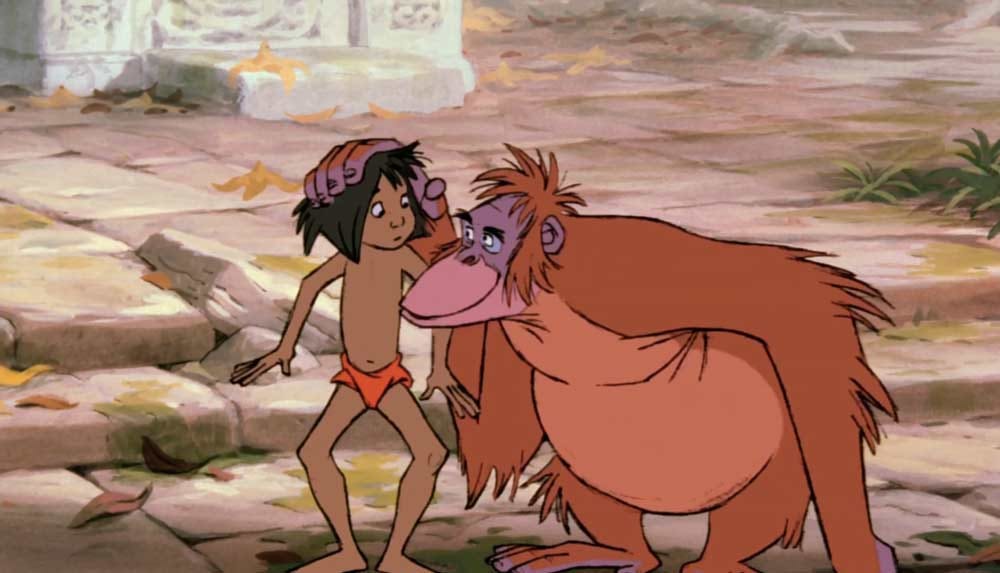
The Jungle Book was written by Rudyard Kipling in 1894. The film adaptation came out in the late 1960s centered around Mowgli a “man-cub”taken in by wolves, who befriends several jungle animals. He befriends King Louie an orangutan and king of the monkeys. Louie and his monkey companions speak “jive” as seen by black jazz musicians of yesteryear and play swing/doo-wop. This is troubling because the other jungle animals speak with a British accent, many of the primates want to be seen as “human”/more civilized. I view The Jungle Book as a predecessor to Disney’s Tarzan in the 90s and see a similar characterization with the primates.
Tarzan, is another Disney Adaptation of a novel, in this case, Edward Rice Burroughs series. There is a scene where all the animals discover Jane and her father’s camp. In this scene, Terk ( Tarzan’s best friend), several other primates and an elephant raid the camp of Jane and her father. The animals then take it upon themselves to start playing doo-wop with the objects found by the camp. While there’s nothing inherently wrong with this scene it’s more of the connotation. Doo-wop is a genre of music that was developed in urban African-American communities in the late 1940s. So my question why did they play that genre of music.
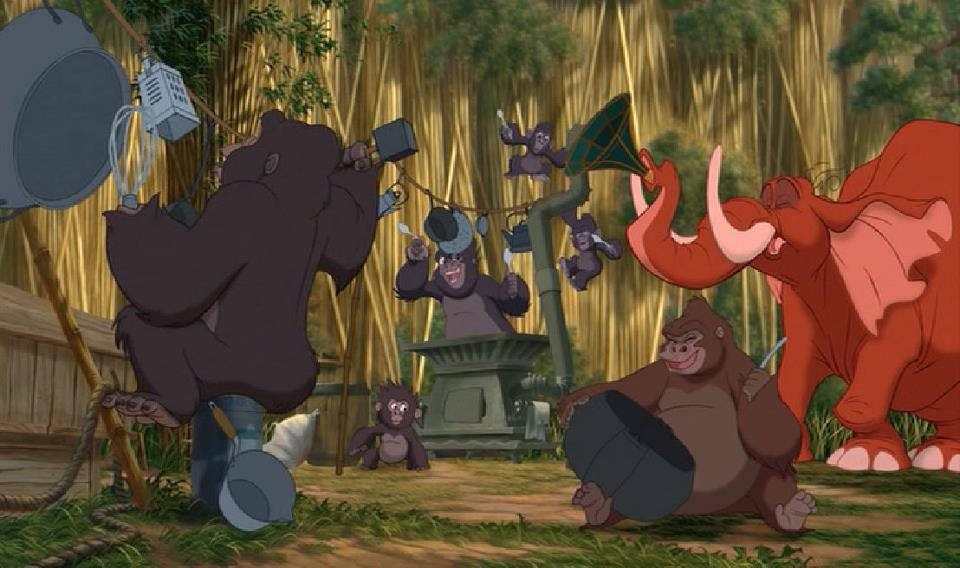
In the Lion King, we can see projects of racist caricatures in the antagonists as displayed in Scar’s henchmen the hyenas. Ed, Banzai, and Shenzi are depicted as bumbling and often speaking in jive talk. Ed doesn’t speak coherently, however, Banzai and Shenzi are coded as being people of color. Banzi speaks in an accent that is stereotypically assigned to Latino males in Western media. In many ways, their design suggests that they are POC being swarthy compared to Simba and the other animals aligned to the good side.
In conclusion, while Disney is a great company that has launched many of our favorite franchises sometimes they produce harmful imagery unintentionally. While several of the movies mentioned above are favorite of mine, as a feminist I have to critique them. I hope that this article makes you examines other ways that racist tropes permeate the fictitious worlds we love. The orient, savage, and the other have been used in ploys in plots in western media since the 20th century. It should be noted that Disney did not create the aforementioned tropes, many come from historical periods of times,however, Disney furthered these portrayals in their contemporary animated features. This doesn’t mean you cannot sing along to these films or enjoy them just be aware of them. I feel that many of these tropes would have been alleviated if more people of color were working behind the scenes. Most recently with the successes of Disney’s Moana and Zootopia (which in so many ways tried to talk about racism, classism, and poverty), they are trying to talk about race in a more sensitive way.
Author: Brittney Maddox
Editor: Han Angus
 From Pretty Little Liars to May December: Grooming in Media
From Pretty Little Liars to May December: Grooming in Media  X-Men ‘97: An Adventurous Series Filled with Nostalgia
X-Men ‘97: An Adventurous Series Filled with Nostalgia  The Disappointing Reinvention of Netflix’s Avatar: The Last Airbender
The Disappointing Reinvention of Netflix’s Avatar: The Last Airbender  Iwájú: A Triumphant Tale of Two Friends and Two Worlds
Iwájú: A Triumphant Tale of Two Friends and Two Worlds  One Day is a Wonderfully Heartbreaking Love Story
One Day is a Wonderfully Heartbreaking Love Story 